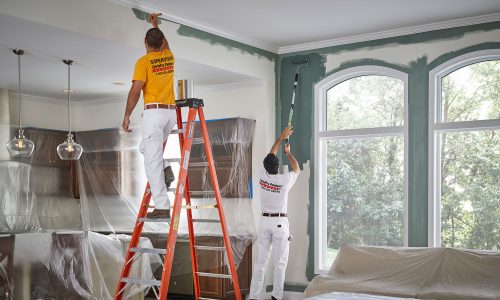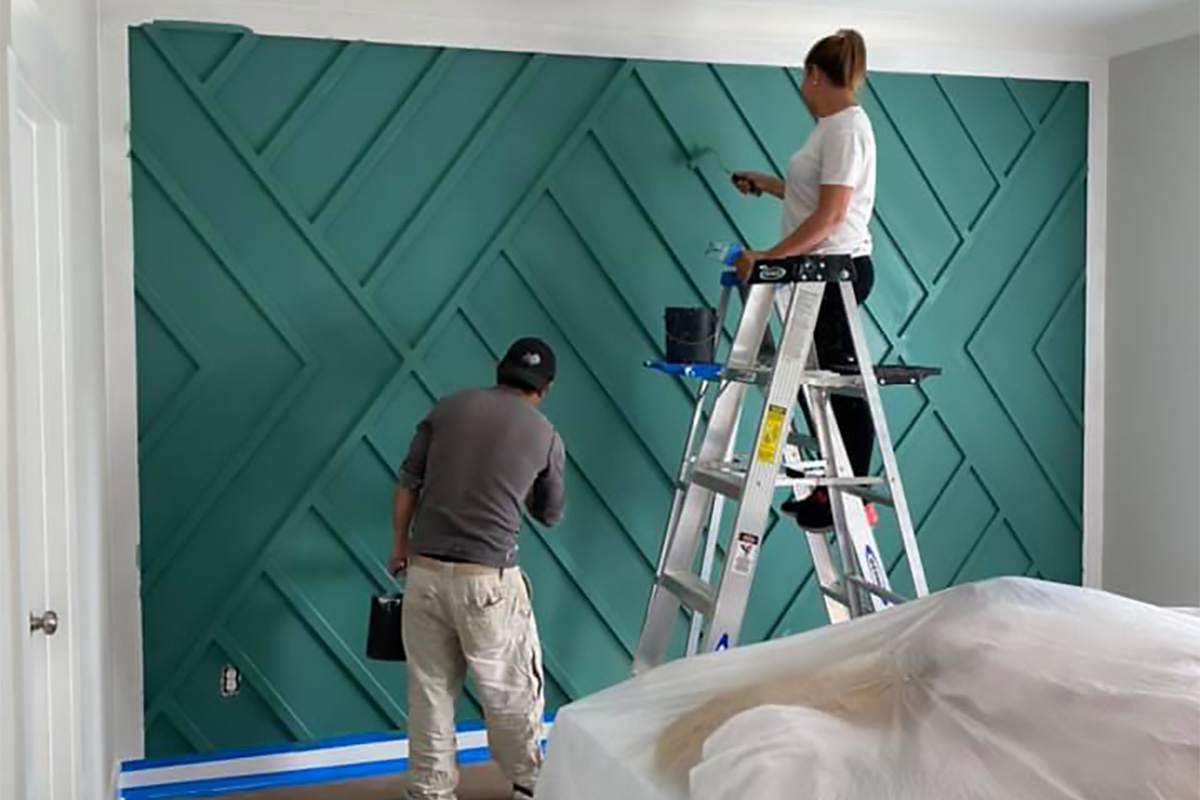Enhance Your Interior Decoration With Comprehensive Shade Assessment
The integration of shade appointment into indoor design offers an unique opportunity to improve and boost the emotional and visual resonance of an area. By involving with an experienced color professional, you can browse the complexities of shade choice, making certain that your selections not only enhance architectural features but also reverberate with individual style and emotional influence.
Benefits of Shade Examination

Additionally, shade assessment help in taking full advantage of all-natural light and enhancing spatial understanding. Lighter shades can make a room appear even more large, while darker tones develop an intimate setup. Cleveland Metro Painting Specialists. This calculated application of color can substantially influence the overall setting of any kind of interior space
In addition, professional experts possess a detailed understanding of classic standards and present fads, guaranteeing that the selected colors will certainly continue to be attractive over time. This insight can save customers from expensive redesigns in the future. Shade consultation equips customers by supplying them with a clear vision and direction, cultivating self-confidence in their design selections and ultimately leading to an extra enjoyable and effective interior design result.
Recognizing Color Psychology
The relevance of shade psychology in interior decoration can not be overstated, as it dives right into the emotional and mental effects that numerous hues can evoke in people. Colors can affect state of mind, actions, and even performance, making them an important factor to consider in any type of layout task.
For example, cozy colors such as red, orange, and yellow are commonly associated with energy and warmth. They can boost sensations of exhilaration and comfort, making them suitable for social areas like living spaces or kitchen areas. Conversely, cool shades like blue, eco-friendly, and purple tend to evoke peace and harmony, making them optimal for bed rooms or meditation locations.
Additionally, the usage of neutral tones can develop a well balanced atmosphere by enabling the bolder colors to stand apart without overwhelming the senses. Recognizing these psychological influences makes it possible for developers to develop areas that not only look visually pleasing however additionally promote emotional wellness.
Including shade psychology into interior layout entails a thoughtful option of shades tailored to the desired feature of each room, eventually enhancing the total experience for its passengers. This recognition is vital for accomplishing a harmonious and useful indoor atmosphere.
The Shade Wheel Described
Recognizing the relationships in between hues is vital for effective indoor layout, and the color wheel serves as a useful tool in this process. The shade wheel, created by Isaac Newton in the 17th century, shows the spectrum of colors arranged in a circular style. It comprises main colors-- red, blue, and yellow-- that can not be developed by mixing various other shades. Secondary colors, developed by combining primaries, include eco-friendly, orange, and purple. Tertiary colors arise from mixing a key and a second shade, bring about hues such as blue-green and red-orange.
The color wheel helps designers understand the partnerships in between colors, including complementary, similar, and triadic plans. Complementary colors, positioned contrary each other on the wheel, create lively contrasts that can energize a room. Analogous shades, located alongside one another, offer a unified and cohesive appearance. Triadic systems use 3 equally spaced colors, offering equilibrium and aesthetic passion.
Using the color wheel in interior decoration not only boosts visual allure but additionally stimulates specific emotions and atmospheres, making learn the facts here now it an essential referral for color consultation. Recognizing these relationships eventually empowers designers to produce spaces that are both useful and aesthetically captivating.
Picking the Right Palette
An appropriate shade plan can link a space, improve its features, and stimulate desired feelings. Different rooms offer varied features and call for combinations that reflect their desired use; for instance, serene shades such as soft blues or environment-friendlies function well in bed rooms, promoting leisure.
Next, take into consideration the all-natural light readily available. Light can drastically change how shades appear, so it is necessary to analyze the space at different times of the day. Furthermore, take into consideration existing building components and furnishings. A harmonious combination needs to enhance these functions, creating a natural appearance throughout the space.
When selecting colors, use the 60-30-10 policy, which recommends that 60% of the room need why not check here to be a dominant shade, 30% a second color, and 10% an accent color. This ratio makes sure equilibrium and visual passion (Cleveland Metro Painting Specialists). Example shades on the wall surfaces before devoting, as this enables you to see just how the shades interact with one an additional and the overall ambiance they produce in your interior layout project.
Dealing With a Color Professional

When collaborating with a color consultant, the procedure typically starts with an initial consultation. Throughout this meeting, you'll discuss your vision, preferences, and the existing aspects in your space. The expert will assess your needs and may recommend certain shade combinations that straighten with your objectives.
After developing an instructions, the expert will certainly supply samples and visual help to help you imagine the suggested color design. This step is critical, as colors can show up differently under differing lighting conditions.
Additionally, a color consultant can direct you in picking corresponding home furnishings, art work, and accessories to balance with your selected scheme. By working together closely, you can achieve a refined visual that raises your insides and creates a welcoming atmosphere. Inevitably, the expertise of a shade consultant investigate this site can significantly enhance the total effect of your layout task.
Verdict
In recap, thorough color assessment serves as an important device for boosting interior layout. By leveraging expert knowledge of color psychology and spatial characteristics, a tailored color combination can be created to evoke details emotions and create a harmonious atmosphere.
By involving with an experienced color expert, you can browse the intricacies of color selection, guaranteeing that your options not only complement architectural features however likewise reverberate with individual design and mental influence. It consists of key colors-- red, blue, and yellow-- that can not be produced by blending various other shades.The shade wheel helps designers realize the relationships in between colors, consisting of corresponding, comparable, and triadic systems.When selecting colors, utilize the 60-30-10 guideline, which suggests that 60% of the area need to be a leading color, 30% a secondary color, and 10% an accent color. By leveraging professional understanding of shade psychology and spatial dynamics, a customized shade combination can be developed to stimulate certain emotions and develop an unified atmosphere.